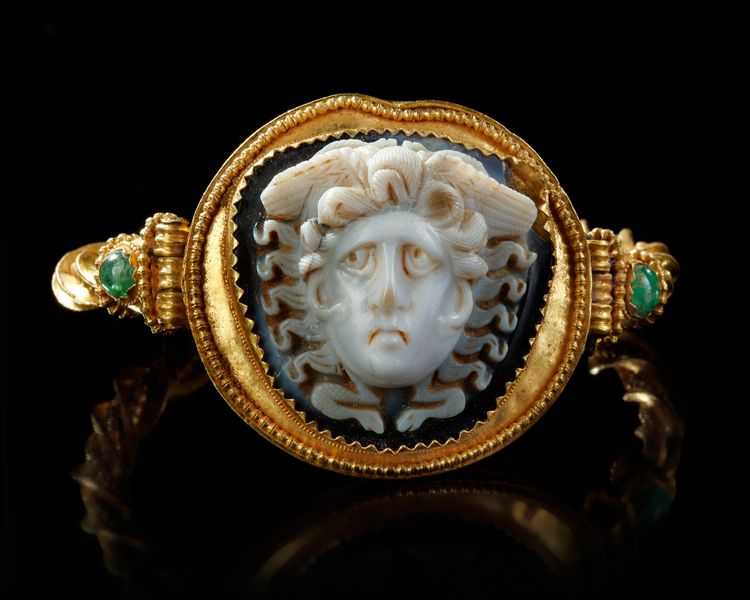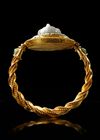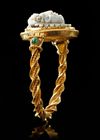AN EXCEPTIONAL ROMAN GOLD BRACELET WITH A CAMEO MOUNTED ON THE CENTRAL MEDALLION, CIRCA 2ND-3RD CENTURY A.D.
A Roman gold bracelet which has been made from two twisted heavy strips which have been twisted around each other and then reinforced with three beaded wires which are soldered to the twisted strips along the seam.
This difficult technique belies the simple appearance at first glance. The twisted strip then enters two finials which are made of gold sheet and decorated with an emerald inlay. The central medallion which is made of sheet and framed with a beaded wire is hollow and probably filled with a sulphur matrix.
The agate cameo of Medusa which fills virtually the whole face of the element in mounted in a saw toothed mount with the edges turned over the edge of the stone. The outside of the mounted is skirted by continuous row of filigreed beads, a technique often encountered in the east of the Roman Empire.
The cameo itself is typical of Roman work from the late 2nd early third centuries AD and is made from an agate where an exceptionally wide seam of white stone has been found.
A hairline crack had been expertly restored and a small chip from the edge of the upper right side is missing. At the top of the medallion a small dent is to be seen which does not distract from the overall appearance.
Size of bracelet: 7.8 cm. diam.
Centre gold medallion: 4.5 cm. diam.
Weight: 92 grams.
PROVENANCE
Private European family collection since 2000s
CONDITION
In excellent condition with little sign of wear.
The motif of Medusa had significant importance in the Roman visual arts, reflecting the understanding by the ancients about this frightful being. Representations of the Medusa from the territory of the Central Balkans suggests a widely known understanding and belief of the protective as well as apotropaic functions of the Medusa. The motif of Medusa i.e. the Gorgoneion, was one of the well known and most represented motifs in architecture, funerary art and artiminori and a widely appreciated decoration of jewellery, signifying the importance of Medusa’s protection for people, especially for women. Widely associated with Athena, Minerva and often seen on the body armour of emperors and military officials, her images would have been everywhere to be seen.








